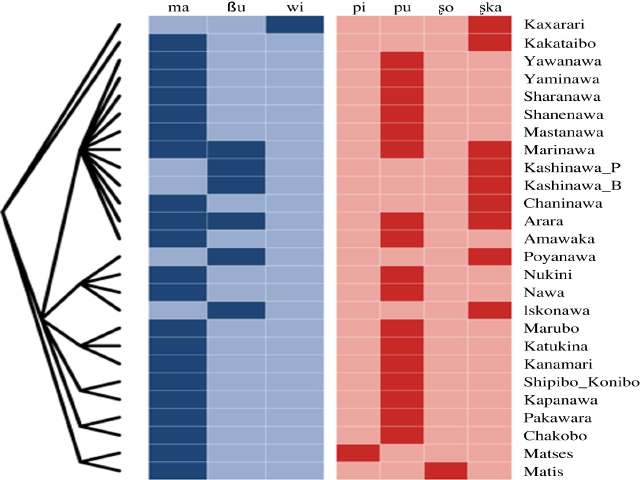Untangling the evolution of body-part terminology in Pano: conservative versus innovative traits in body-part lexicalization

Authors:
Citation:
Details:
Published: 12 December, 2022.
Download:
Abstract:
Although language-family specific traits which do not find direct counterparts outside a given language family are usually ignored in quantitative phylogenetic studies, scholars have made ample use of them in qualitative investigations, revealing their potential for identifying language relationships. An example of such a family specific trait are body-part expressions in Pano languages, which are often lexicalized forms, composed of bound roots (also called body-part prefixes in the literature) and non-productive derivative morphemes (called here body-part formatives). We use various statistical methods to demonstrate that whereas body-part roots are generally conservative, body-part formatives exhibit diverse chronologies and are often the result of recent and parallel innovations. In line with this, the phylogenetic structure of body-part roots projects the major branches of the family, while formatives are highly non-tree-like. Beyond its contribution to the phylogenetic analysis of Pano languages, this study provides significative insights into the role of grammatical innovations for language classification, the origin of morphological complexity in the Amazon and the phylogenetic signal of specific grammatical traits in language families.